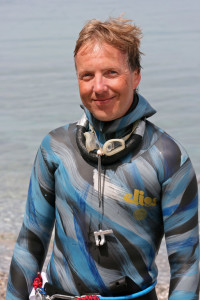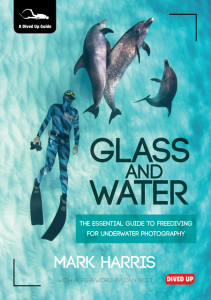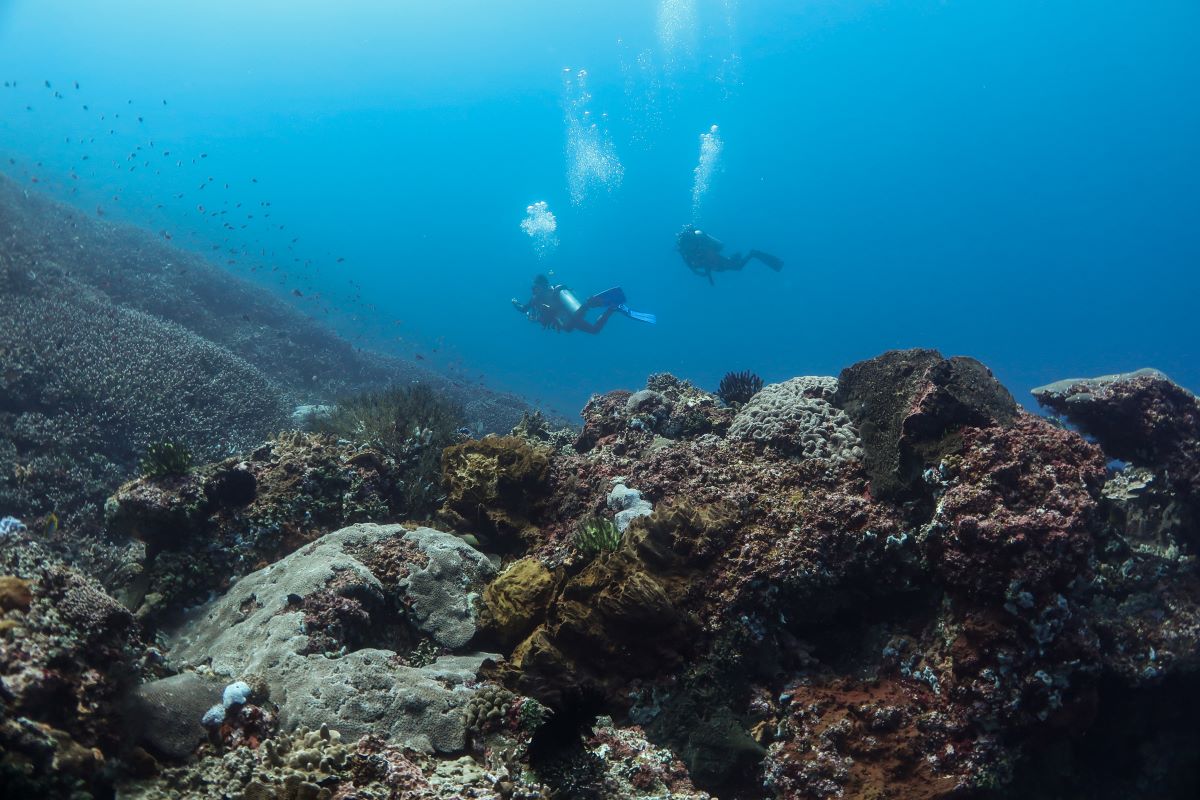News
BOOK REVIEW: Glass and Water – The Essential Guide to Freediving for Underwater Photography

Author: Mark Harris
Review by Steve Millard of Apneists UK
About the Author
 When I found out Mark Harris was writing a book about freediving I was excited, as there are maybe a handful of good factual books out there on the subject. He hasn’t failed to deliver a quality product.
When I found out Mark Harris was writing a book about freediving I was excited, as there are maybe a handful of good factual books out there on the subject. He hasn’t failed to deliver a quality product.
Mark is one of the most respected freedivers to come out of the United Kingdom. Good freedivers writing on the subject start to dispel some of the myths and highlight this great and diverse sport. When Mark makes a new facet of freediving his focus, he excels. His previous experience in the sport has seen him organise the long running London Freediving group. He was a very successful athlete, winning various titles including a silver medal at the 2004 World Championships and was my captain on the 2006 World Championship UK Freediving squad. He was a competition judge, an Instructor, a Coach and now a notable Underwater photographer and author. The advanced skills discussed can be exploited even by beginners and intermediate divers if practised properly.
Overview of the book
 Glass and water is the first book dedicated to explaining the essentials for successfully pursuing underwater photography without SCUBA gear. It isn’t designed to teach the reader all freediving skills, but it does cover those vital in understanding some of the safety aspects of the sport. Throughout the book it is stressed the need for the reader to take a Freediving course and regular training within a club structure to gain the best and safest results. It also isn’t a book to teach the reader everything there is to know about underwater photography. There are great tips about these two subjects, but specifically it helps the reader understand the subtle nuances in breath hold photography whilst still delivering other tips, and direction to further reading and training opportunities.
Glass and water is the first book dedicated to explaining the essentials for successfully pursuing underwater photography without SCUBA gear. It isn’t designed to teach the reader all freediving skills, but it does cover those vital in understanding some of the safety aspects of the sport. Throughout the book it is stressed the need for the reader to take a Freediving course and regular training within a club structure to gain the best and safest results. It also isn’t a book to teach the reader everything there is to know about underwater photography. There are great tips about these two subjects, but specifically it helps the reader understand the subtle nuances in breath hold photography whilst still delivering other tips, and direction to further reading and training opportunities.
It is split into three broad sections: equipment and basics, technique, and perspectives and approaches to photographing particular animals.
One of the things I liked about the book is that it simplifies information. It exposes the reader to key ideas and onto additional sources of information when the book doesn’t specifically cover that particular information. You will end up with an extensive skill set if you pursue all avenues of advice.
One of my favourite sections is a good candid overview about freediving safety, leaving the reader in no doubt as to the risks of the sport, and also the safe nature of the sport when practiced properly. A four step plan is offered to the reader for consideration to avoid a serious incident. Once beyond the realms of being a ‘snorkeler’ and having increased duration and depth during dives, a proportionate amount of additional considerations on how to continue to dive safely are essential. Having said that, it is always stressed the reader and potential freediver should not be pushing their limits in these situations.
The main focus of the book isn’t stationary objects, it is mainly about photographing living creatures of all descriptions, and Mark has a lot of experience in this area. There is a good section for the reader on the ethics and considerations of entering the underwater world and the impact of interactions with its natural underwater inhabitants. Photographers and freedivers can be amazing ambassadors for the Underwater world; we must not damage it in any way and limit interactions that change behaviour.
I would say that as many ideas, concepts and techniques are developed throughout the book, I would read it initially from cover to cover to grasp all of the information on offer. It then will serve as a great resource to look back on as it is well written and well indexed. As some of the basic concepts are difficult to explain fully, there is a great summary at the end of each section to remind the reader of the important points ‘in a nutshell’ and a useful glossary at the end for those new to freediving and/or underwater photography.
There are many references to other sections in the book, and you feel a lot of thought has gone into how to give the reader the best understanding of the subject. A good writer considers what the reader needs to read, not what the author wants to write. As you would imagine there are some great example pictures showing some showcase work, and highlighting good technique.
Glass and Water is a great addition to the bookshelf for photographers and freedivers. You can get a copy from http://divedup.com/shop/glass-water-essential-freediving-underwater-photography-guide/.
Gear News
DYNAMICNORD to present full product range at Go Diving Show 2025

The new German dive brand DYNAMICNORD is delighted to present its complete product line for the first time at the Go Diving Show in March 2025. Visitors can look forward to discovering the full diving range, including a complete snorkel and apnea line, as well as a swimwear range.
The international team brings decades of practical experience in diving and related technology. That’s why the German R&D team develops products based on a deep understanding of divers’ needs and desires under the premise “Innovation – Credibility – Functionality”. DYNAMICNORD products are driven by emotion and a sophisticated design process.
If you would like to see the full range and the new products, you are cordially invited to visit DYNAMICNORD at the Go Diving Show in hall 2, stand 120.

Strong partner Scuba Dive Store
DYNAMICNORD is pleased to have a strong partner at its side. The well-known dealer Scuba Dive Store will be selling DYNAMICNORD products at the show. All divers are welcome to learn more about the DYNAMICNORD range and choose their favourite products.
You will find Scuba Dive Store in hall 2, stand 220 – next to the DYNAMICNORD stand.
Find out more about Scuba Dive Store here: www.scubadivestore.co.uk
New products
DYNAMICNORD will present its full product line to the trade show, as well as many new products. The diving world can look forward to regulators, dive computers, tech wings, BCDs, camouflage neoprene suits, drysuits, undergarments, and a complete snorkelling and apnea line, as well as a swimwear range.
Chance to win
There will be further highlights and a sweepstake at the trade show. Visitors have a chance to win a regulator. Find out more on our social channels:
www.facebook.com/dynamicnord.official
www.instagram.com/dynamicnord.official/
The whole DYNAMICNORD team is looking forward to meeting divers and partners.
DYNAMICNORD – Your Outdoor Companion.
Marine Life & Conservation
IUCN Spotlights Green Fins at Bali Ocean Days 2025, Calling for Stronger Business Model in Marine Conservation

IUCN (International Union for Conservation of Nature) Global Ocean Director, Minna Epps, has spotlighted Green Fins Indonesia along with a call for stronger business models that sustain marine conservation. Speaking at the inaugural session of Bali Ocean Days 2025 held on 7-8 February, Epps emphasised the need for sustainable financing to support and scale marine conservation initiatives such as Green Fins.

Activities earlier in the week with the Coral Triangle Center in Sanur and Ceningan Divers in the Nusa Penida Marine Protected Area shaped the IUCN Ocean Director’s message at the conference and showcase, aligning with the theme of the blue economy and impact finance to sustain marine ecosystems.

“Tourism has such a big impact on marine biodiversity, and we need it to adhere to a certain code of conduct,” Epps said. “That is why through our funding facilities, we worked with The Reef-World Foundation advancing Green Fins so dive operators can become certified with standards. But this kind of initiative has been around for a long time and it’s also a tool used to improve [MPA management], but it needs to come with a business model. I also believe in market-based instruments to evolve this programme.”

IUCN’s visit is part of their Blue Natural Capital Financing Facility (BNCFF), which supports at least 21 projects around the world, building the business case for investing in the future of our ocean.
In Indonesia, the project supported by IUCN was developed in partnership with The Reef-World Foundation, the Coordinating Body on the Seas of East Asia (COBSEA) and the Coral Triangle Center, which serves as the local implementing organisation for Green Fins. The initiative engages marine tourism businesses through voluntary sustainability certification based on the only internationally recognised environmental standards for diving and snorkelling operations. Green Fins’ activities aim to reduce negative environmental impacts associated with marine tourism activities as well as improve the management of marine protected areas.

IUCN’s promotion of Green Fins in Bali Ocean Days signals the need for greater private sector engagement in marine conservation across Indonesia and beyond.
Investors, donors, marine tourism operators and stakeholders looking to support scalable marine conservation solutions are encouraged to explore opportunities with The Reef-World Foundation, the international coordinator of the Green Fins initiative. To learn more about sustainable marine tourism and how to get involved, visit www.reef-world.org.

About Reef-World
The Reef-World Foundation is a registered UK charity which delivers practical solutions for marine conservation around the world. The charity promotes the wise use of natural resources – particularly coral reefs and related ecosystems – for the benefit of local communities, visitors and future generations. It is dedicated to supporting, inspiring and empowering governments, businesses, communities and individuals around the world to act in conserving and sustainably developing coastal resources.
Reef-World leads the global implementation of the UN Environment Programme’s Green Fins initiative, which focuses on driving environmentally friendly scuba diving and snorkelling practices across the industry globally. As such, the charity provides low-cost and practical solutions to local and industry-wide environmental challenges associated with the marine tourism industry. It provides education and capacity-building assistance to empower environmental champions (within the diving industry, local communities, authorities and governments) to implement proven coastal resource management approaches.
Visit www.reef-world.org to learn more or follow them on Facebook, Instagram and X.
About Green Fins
Green Fins is a proven conservation management approach – spearheaded by The Reef-World Foundation in partnership with the UN Environment Programme – which leads to a measurable reduction in the negative environmental impacts associated with the marine tourism industry. The initiative aims to protect and conserve coral reefs through environmentally friendly guidelines that promote a sustainable diving and snorkelling tourism industry. It provides the only internationally recognised environmental standards for the diving and snorkelling industry and has a robust assessment system to measure compliance.
Green Fins encourages and empowers members of the diving industry to act to reduce the pressures on coral reefs by offering dive and snorkel companies practical, low-cost alternatives to harmful practices – such as anchoring, fish feeding and chemical pollution – as well as providing strategic training, support and resources. By reducing the local direct and indirect pressures tourism puts on coral reefs, it helps make corals healthier and more resilient to other stresses such as the effects of climate change. Look for the Green Fins logo when booking your next dive trip.Visit www.greenfins.net to learn more or follow the initiative on Facebook, Instagram and X.
-

 Gear Reviews1 month ago
Gear Reviews1 month agoGear Review: SurfEars 4
-

 News3 months ago
News3 months agoSanta Divers take the Plunge for Charity
-

 Marine Life & Conservation2 months ago
Marine Life & Conservation2 months agoPaul Watson Released as Denmark Blocks Japan’s Extradition Bid
-

 Blogs3 months ago
Blogs3 months agoExperience Malta and Gozo in 2025: A Paradise for Divers and Culture Lovers
-

 Blogs2 months ago
Blogs2 months agoJeff Goodman Launches Underwater Moviemaker Course with NovoScuba
-

 News3 months ago
News3 months agoDive into Adventure: Limited Space Available for January Socorro Liveaboard Trip with Oyster Diving
-

 Blogs3 months ago
Blogs3 months agoThe Benefits of Underwater Photography Workshops
-

 Blogs3 months ago
Blogs3 months agoDiscover Curaçao with the Ultimate Dive Vacation Guide – 2024 DEMA Special Edition















